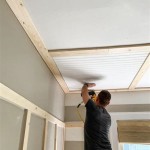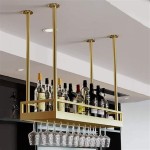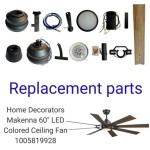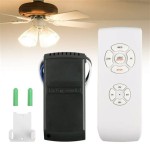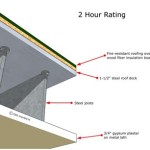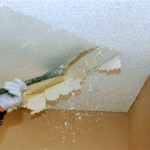Wooden Ceiling Design for Living Rooms: Enhancing Aesthetics and Value
Wooden ceiling designs present a compelling option for elevating the aesthetic appeal and perceived value of living rooms. The natural warmth, texture, and versatility of wood offer a diverse range of design possibilities, capable of complementing various interior styles, from rustic and traditional to modern and minimalist. This article explores the benefits, design considerations, and various types of wooden ceiling designs suitable for living rooms.
The implementation of wooden ceiling designs can significantly impact the ambiance of a living room. Wood inherently possesses insulating properties, contributing to improved thermal comfort and potentially reducing energy consumption. Furthermore, the acoustic properties of wood can help dampen sound reverberations, creating a more pleasant and comfortable living environment. Beyond the practical benefits, the aesthetic impact is undeniable. Wooden ceilings introduce a layer of sophistication and visual interest that can transform a standard living room into a space of refined elegance or cozy rustic charm, depending on the design choices.
Aesthetic Versatility and Design Styles
One of the primary advantages of wooden ceiling designs lies in their adaptability to diverse interior design styles. The range of wood species, finishes, and installation patterns provides a wide spectrum of aesthetic possibilities. For instance, a living room with a rustic or farmhouse aesthetic might benefit from the installation of reclaimed wood planks, showcasing natural imperfections and a weathered appearance. This creates a sense of authenticity and connection to the past.
Conversely, a modern or contemporary living room might be enhanced by a sleek, minimalist wooden ceiling crafted from light-colored wood such as maple or birch. These woods can be finished with a clear sealant to highlight the natural grain and create a clean, uncluttered look. The use of linear planking or geometric patterns can further emphasize the modern aesthetic.
Traditional living rooms often benefit from more elaborate wooden ceiling designs, such as coffered ceilings or intricate paneling. Coffered ceilings, characterized by recessed panels framed by wooden beams, add a sense of depth and grandeur to the space. The panels can be painted or stained to complement the existing décor, while the beams can be left natural to highlight the beauty of the wood. Intricate paneling, often featuring carved details or decorative moldings, can also add a touch of classic elegance to a traditional living room.
Beyond these broad categories, there are numerous other design styles that can be incorporated into wooden ceiling designs. For example, a coastal-themed living room might feature whitewashed wooden planks to evoke the feeling of driftwood and sea air. An eclectic living room might incorporate a mix of different wood species and finishes to create a unique and visually stimulating space.
Types of Wooden Ceiling Materials and Installation Methods
The selection of the appropriate wood material is crucial for achieving the desired aesthetic and ensuring the longevity of the wooden ceiling. Various wood species offer distinct characteristics in terms of color, grain pattern, durability, and cost. Commonly used wood species for ceiling designs include:
- Pine: A readily available and relatively inexpensive softwood, pine is often used for rustic and farmhouse-style ceilings. Its light color and prominent grain pattern make it a popular choice for staining or painting.
- Oak: A durable and strong hardwood, oak is known for its distinctive grain pattern and warm color. It is a versatile option that can be used in a variety of design styles, from traditional to modern.
- Maple: A light-colored hardwood with a fine grain, maple is a popular choice for contemporary and minimalist designs. It is also a durable and stable wood, making it suitable for humid environments.
- Cedar: A naturally aromatic wood with a reddish-brown color, cedar is known for its resistance to insects and decay. It is often used for outdoor applications but can also be used indoors to create a warm and inviting atmosphere.
- Reclaimed Wood: Sourced from old buildings or structures, reclaimed wood offers a unique and sustainable option for ceiling designs. It often features a weathered appearance and adds a sense of history and character to the space.
The installation method also plays a significant role in the overall appearance and performance of the wooden ceiling. Several installation methods are commonly employed, including:
- Direct Application: In this method, the wooden planks or panels are directly attached to the ceiling joists or framing. This is a relatively simple and cost-effective method, but it may not be suitable for uneven ceilings.
- Suspended Ceiling: A suspended ceiling, also known as a drop ceiling, consists of a grid of metal runners suspended from the existing ceiling. Wooden panels or tiles are then placed within the grid, creating a finished ceiling surface. This method allows for easy access to wiring and plumbing and can also help to improve sound insulation.
- Tongue and Groove: Tongue and groove planks are designed with interlocking edges that create a seamless and secure connection. This method is often used for solid wood ceilings and provides a clean and professional look.
- Beam Ceilings: Wooden beams can be added to an existing ceiling to create a decorative and structural element. These beams can be made from solid wood or hollow boxes and can be stained or painted to complement the existing décor.
The choice of installation method will depend on factors such as the type of wood material, the condition of the existing ceiling, and the desired aesthetic.
Considerations for Lighting, Acoustics, and Maintenance
Integrating lighting into a wooden ceiling design requires careful planning to maximize its effectiveness and enhance the overall ambiance of the living room. Recessed lighting fixtures are a popular choice for wooden ceilings, as they provide ambient light without detracting from the visual appeal of the wood. Spotlights can be used to highlight specific features of the room, such as artwork or furniture. Pendant lights can also be incorporated to add a decorative touch and provide focused task lighting.
The acoustic properties of wooden ceilings can be further enhanced by incorporating sound-absorbing materials. Acoustic panels made from wood or other materials can be integrated into the ceiling design to reduce sound reverberation and improve the overall acoustic comfort of the space. These panels can be concealed behind wooden slats or panels to maintain the desired aesthetic.
Maintaining a wooden ceiling involves regular cleaning and occasional refinishing. Dusting the ceiling with a soft cloth or vacuuming with a brush attachment will help to remove dust and debris. For more stubborn stains, a mild soap and water solution can be used. Avoid using harsh chemicals or abrasive cleaners, as these can damage the wood finish. Depending on the type of wood and the finish, the ceiling may need to be refinished every few years to maintain its appearance and protect it from moisture and wear.
It's important to consider the overall humidity levels in the living room. Extreme fluctuations in humidity can cause wood to expand and contract, leading to cracks or warping. Maintaining a consistent humidity level can help to prevent these problems. A dehumidifier or humidifier can be used to regulate humidity levels as needed.
In conclusion, the design possibilities for wooden ceilings in living rooms are vast and varied. By carefully considering the aesthetic goals, the type of wood material, the installation method, and the lighting and acoustic requirements, it is possible to create a stunning and functional living space that reflects personal style and enhances the overall value of the home.

Living Room Wooden Ceiling Design Work Provided False Pop At 150 Square Feet In Chennai

Wooden False Ceiling Designs Home Decor

11 Wooden False Ceiling Design For Modern Homes Designcafe

Simple Wooden False Ceiling Design For Bedroom

1000 Living Room Interior Wooden False Ceiling Design Service Work Provided Wood Furniture At 450 Square Feet In Faridabad

10 Wooden False Ceiling Designs You Will Love For Your Home Livspace

Wooden Ceiling Design For The Living Room In Your Home

10 Simple Wooden Ceiling Designs For Different Rooms With Lighting Ideas

18 Wooden False Ceiling Designs For Living Room In Your Home

Wood Ceiling Ideas Ceilings Armstrong Residential
See Also


